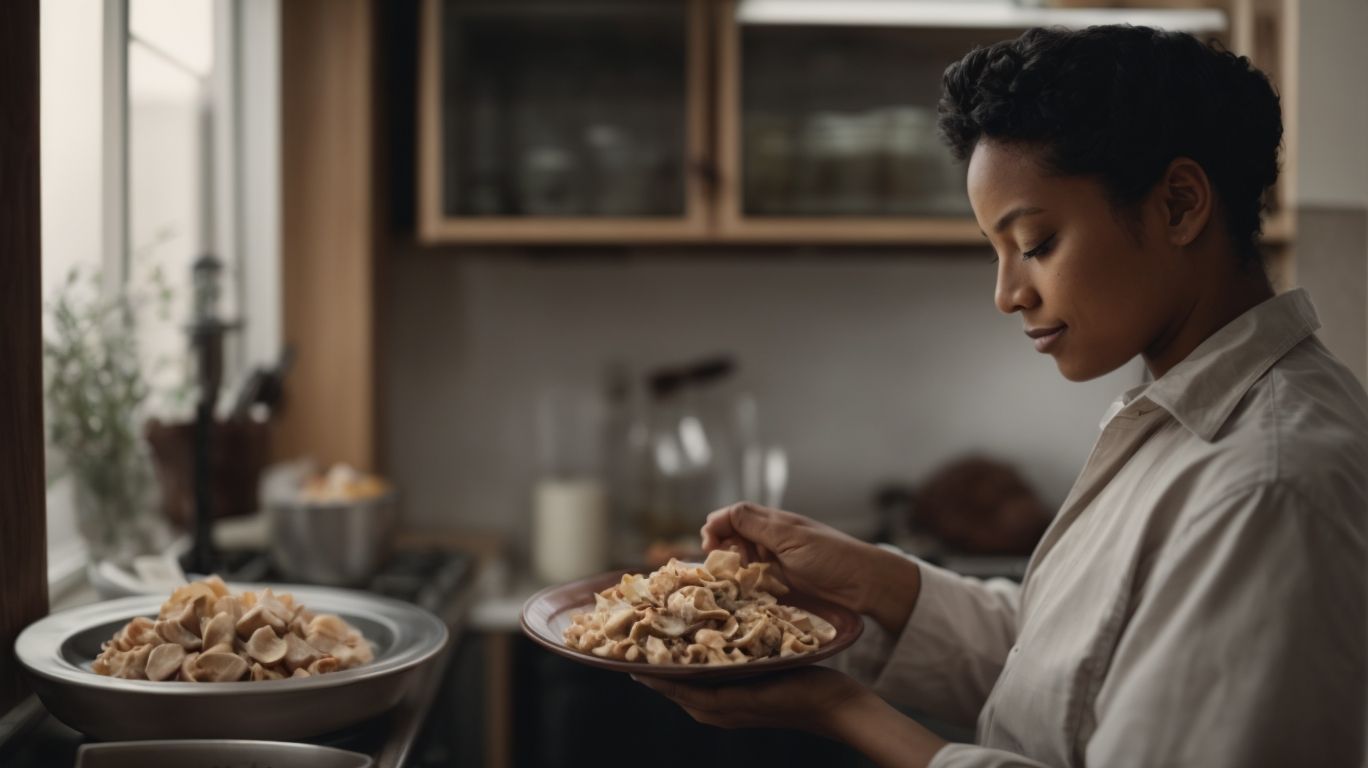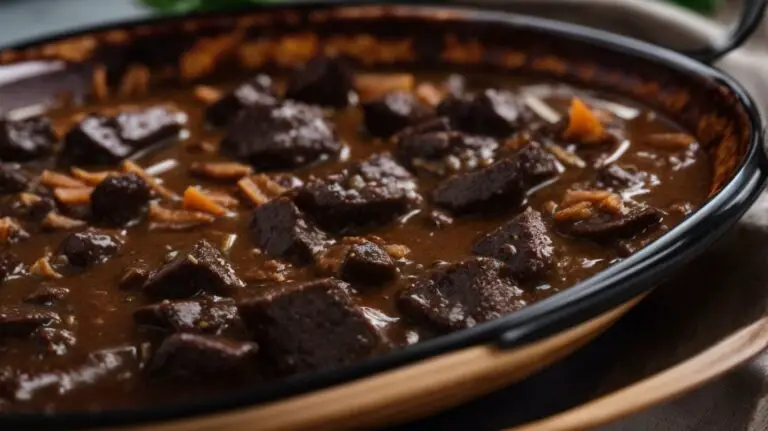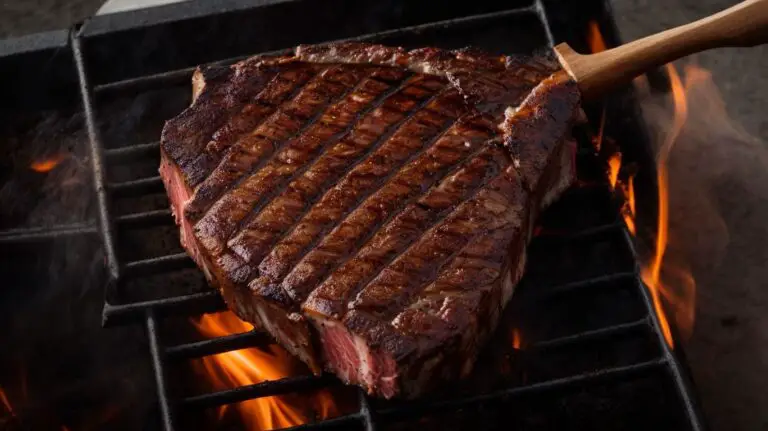How to Cook Chitterlings Without Smell?
If you’ve ever been curious about chitterlings but were put off by their strong smell, you’re not alone.
In this article, we’ll explore what chitterlings are, why they have a strong odor, and most importantly, how to clean and cook them without that distinct smell.
From soaking in salt water to slow cooking with aromatic ingredients, we’ll cover everything you need to know to enjoy this delicacy without the overpowering scent. Stick around for some delicious chitterling recipes and tips on storage and reheating.
Let’s make chitterlings a delightful culinary experience!
Key Takeaways:
What Are Chitterlings?
Chitterlings, also known as chitlins, are a type of food made from the intestines of a pig.
Made popular by African American cuisine, chitterlings have a history dating back to traditional Southern soul food. The tradition of using every part of the animal, including offal like chitterlings, harks back to centuries-old cooking practices influenced by resourcefulness and necessity.
In African cultures, consuming offal was a way to show respect to the animal and utilize every part sustainably. Chitterlings gained cultural significance in the American South, particularly during times of scarcity, when enslaved populations had to make the most of what little food was available.
Regarding the culinary aspect, chitterlings are often seasoned heavily with spices like pepper, onion, and garlic during the cleaning and cooking process to remove any potential pungent odor. Chefs often braise or stew chitterlings to create a tender, flavorful dish, sometimes served with hot sauce or vinegar for added zest.
Why Do Chitterlings Have a Strong Smell?
The strong smell associated with chitterlings is primarily due to their intestinal origin and the presence of certain compounds within the meat.
When chitterlings are being cooked, these compounds, such as skatole and indole, are released into the air, resulting in a distinct odor that can be quite overpowering. The cooking process itself, often involving boiling or simmering for extended periods, further intensifies the aroma. The ingredients used in preparing chitterlings, such as vinegar and spices, contribute to the overall smell profile of the dish.
How To Clean Chitterlings?

Credits: Poormet.Com – Jacob White
Cleaning chitterlings involves a thorough process of removing fat, soaking in salt water, and rinsing with vinegar to eliminate impurities and reduce odor.
Once the chitterlings have been thawed, begin by placing them in a large bowl of cold water. Removing the fat is essential as it can impart a strong flavor if not properly cleaned. After gently stripping them of any visible fat, soak the chitterlings in a mixture of water and salt. This helps to draw out any remaining impurities.
Next, it’s time to rinsing with vinegar. Create a solution of water and vinegar and let the chitterlings sit in it for a period. The acidity of the vinegar assists in neutralizing any funky smells and further cleansing the chitlins. Rinse them thoroughly before cooking and enjoy a plate of delicious, clean chitterlings.”
Removing Fat and Debris
The initial step in cleaning chitterlings involves meticulously removing excess fat and debris from the intestines to ensure a cleaner final product.
This is a crucial step as chitterlings can have a strong flavor if not properly cleaned. To effectively remove the fat and debris, it is recommended to rinse the chitlins thoroughly under cold running water. Removing the excess fat and debris is essential for enhancing the taste and texture of the dish.
Some may choose to soak the chitterlings in a mixture of water and vinegar or lemon juice to further cleanse them. Using a small knife or scissors to carefully trim any remaining fat or tough spots can greatly improve the overall quality of the chitlins.
Soaking in Salt Water
Soaking chitterlings in salt water helps to further cleanse the intestines and reduce any remaining impurities or strong odors.
It is recommended to soak the chitterlings for at least a few hours, or even overnight, to ensure thorough cleaning and softening of the meat.
Salting the chitterlings draws out any blood, debris, and excess fat, allowing them to be easily rinsed away.
This process not only improves the overall flavor and texture of the dish but also helps in tenderizing the tough lining of the intestines.
Rinsing with Vinegar
Rinsing chitterlings with vinegar serves as a final cleansing step to eliminate any residual odor and ensure the chitlins are ready for cooking.
When preparing chitlins, it’s vital to soak them in a mixture of vinegar and water to help remove any impurities and strong smells. The recommended vinegar-to-water ratio is generally around 1:2 or 1:3, depending on personal preference and the intensity of the odor.
This soaking process not only helps in sanitizing the chitterlings but also assists in softening the tissue and making them more palatable. The acidic nature of vinegar acts as a natural cleaner, breaking down any lingering residues and leaving the chitlins fresh and odor-free.
Boiling with Lemon and Onion
Boiling chitterlings with lemon and onion not only helps tenderize the meat but also imparts a refreshing flavor that complements the rich pork taste.
When chitterlings are boiled with a splash of fresh lemon juice and slices of onion, the natural acidity of the lemon serves as a natural tenderizer, breaking down tough fibers and resulting in a more succulent texture. The onion adds a subtle sweetness and depth to the broth, balancing out the inherent richness of the chitlins.
Together, these ingredients work harmoniously to elevate the overall taste profile of the dish, creating a delightful medley of flavors that is both comforting and satisfying.
How To Cook Chitterlings Without Smell?
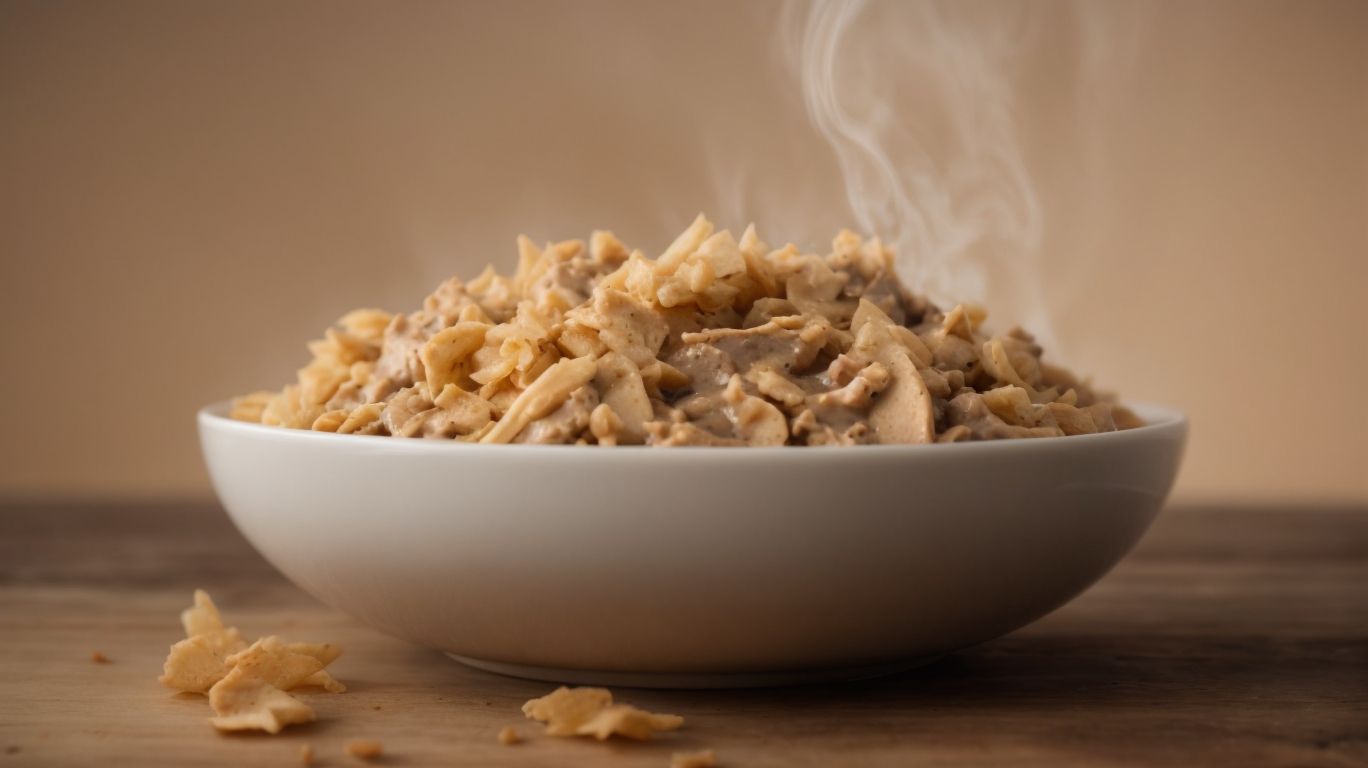
Credits: Poormet.Com – Samuel Sanchez
Cooking chitterlings without the typical strong smell involves utilizing aromatic seasonings, spices, and cooking techniques that help mask or eliminate the odor.
To start, when preparing chitterlings, it is recommended to soak them in a mixture of water, vinegar, and lemon juice to help reduce the strong odor.
Next, incorporating ingredients like onions, garlic, bay leaves, and thyme during the cooking process can enhance the flavor while also minimizing the smell.
Cooking chitlins with a combination of tomatoes, bell peppers, and celery not only adds depth to the dish but also helps in neutralizing any lingering odors.
Utilizing slow cooking methods like simmering or braising with a touch of vinegar can further aid in reducing the smell while tenderizing the chitterlings.
By being strategic with seasonings and cooking techniques, you can enjoy chitterlings without the overwhelming scent that often accompanies them.
Slow Cooking with Aromatics
Slow cooking chitterlings with aromatic herbs and seasonings allows the flavors to meld together while reducing the strong smell associated with the dish.
When chitterlings are gently simmered over a low heat for an extended period, the tough connective tissues break down, resulting in a tender and succulent texture. The blend of aromatic ingredients infuses the meat with a depth of flavor that is both rich and complex. The slow cooking process tenderizes the chitterlings, making them more palatable and easier to digest. The slow cooking method ensures that the dish retains more of its nutrients and natural juices, leading to a more nutritious meal overall.
Adding Acidic Ingredients
Incorporating acidic ingredients like vinegar and lemon into chitterling recipes can help cut through the richness of the meat and mitigate any lingering smells.
Acidic components play a crucial role in chitterling dishes by adding a bright, tangy contrast to the savory flavors of the meat. The acidity from vinegar or lemon juice not only helps in tenderizing the chitterlings but also balances out the overall taste profile.
By breaking down some of the fattiness and enhancing the natural flavors, these acidic elements provide a refreshing kick to the dish. It’s not just about taste; the acid also works wonders in reducing the strong odors associated with chitterlings, making the dining experience more pleasant.
Using Strong Spices and Herbs
Enhancing chitterlings with robust spices and herbs not only elevates the dish’s flavor profile but also helps mask any unwanted smells during cooking.
When preparing chitterlings, the strong flavors of spices like cumin, paprika, and garlic can effectively cut through the rich, fatty nature of the dish, creating a harmonious balance. Incorporating aromatic herbs such as thyme, rosemary, and parsley adds layers of freshness and complexity to the overall taste.
These powerful ingredients not only enhance the taste of chitterlings but also play a crucial role in reducing the strong odor that often accompanies cooking this dish. Their natural essences create a fragrant cloud that transforms the cooking environment, making it more pleasant for those around.
Cooking with Beer or Wine
Cooking chitterlings with beer or wine can add depth and complexity to the dish while helping to neutralize any strong odors that may be present.
When simmered with **beer**, chitterlings develop a rich, savory flavor with subtle hoppy undertones. The carbonation in beer tenderizes the chitterlings, resulting in a more tender and juicy texture. On the other hand, **wine** can bring a touch of acidity and fruitiness to the dish, balancing the richness of the chitterlings. The alcohol in both beer and wine helps to break down proteins and fats in the chitterlings, further enhancing their tenderness. This flavorful combination not only masks any unappealing scents but also elevates the overall taste profile of the dish.
What Are Some Recipes for Cooking Chitterlings Without Smell?
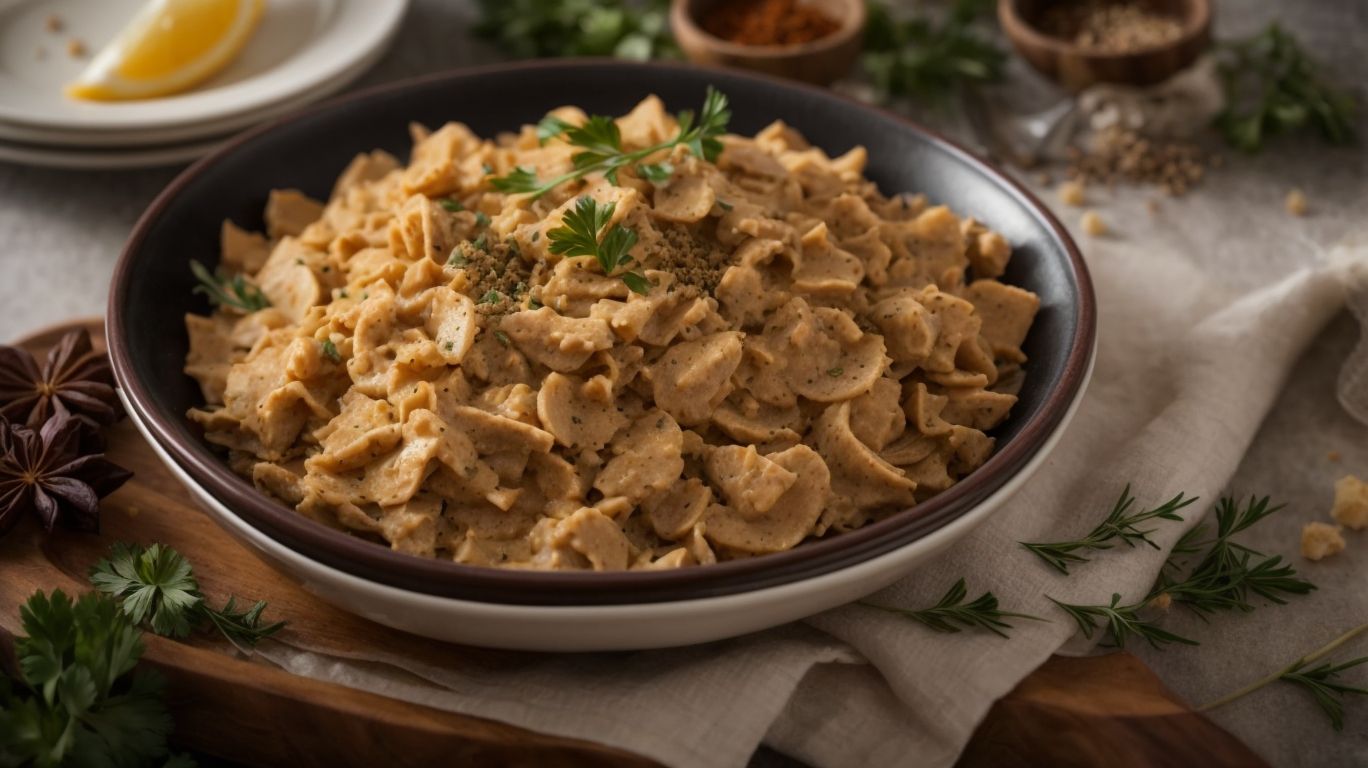
Credits: Poormet.Com – Jonathan Adams
There are several delightful recipes for cooking chitterlings without the strong smell, such as Southern-style chitterlings with hot sauce, garlic, and bell peppers.
Another popular method to prepare chitterlings while minimizing their odor involves Mexican-inspired spices like cumin, chili powder, and lime juice, which infuse the dish with a zesty kick.
In contrast, Asian-style chitterlings can be cooked with ginger, soy sauce, and a hint of sesame oil for a savory and aromatic twist.
Mediterranean chitterlings might feature herbs like oregano, thyme, and a splash of red wine vinegar, providing a unique blend of flavors that elevate the dish to new heights.
Southern Style Chitterlings with Hot Sauce
The Southern style chitterlings recipe with hot sauce and garlic offers a spicy twist to this classic dish, infusing it with bold flavors.
Chitterlings, also known as chitlins, are a traditional Southern delicacy made from the cleaned intestines of hogs. To start, ensure you thoroughly clean and rinse the chitterlings, removing any excess fat and debris. Once cleaned, the key to achieving the rich and savory taste lies in the careful seasoning.
Southern spices such as cayenne pepper, paprika, and thyme are essential for creating that authentic flavor profile. Don’t forget the garlic, which adds a depth of flavor and enhances the overall taste.
Cajun Chitterlings with Andouille Sausage
Cajun chitterlings with Andouille sausage offer a flavorful and robust dish that combines the unique spices and flavors of Cajun cuisine.
This traditional Cajun recipe involves marinating chitterlings in a mix of cayenne pepper, paprika, garlic powder, onion powder, and thyme to infuse them with that signature Louisiana heat.
The addition of Andouille sausage brings a savory depth to the dish that perfectly complements the rich flavor of the chitterlings.
Sautéing the ingredients together creates a mouthwatering marriage of flavors that will transport your taste buds straight to the heart of the French Quarter.
Chinese Style Chitterlings with Ginger and Soy Sauce
Chinese style chitterlings with ginger and soy sauce offer a savory and aromatic dish that highlights the delicate balance of flavors in Chinese cuisine.
Chitterlings, known for their unique texture and rich flavor, are a staple ingredient in many Asian dishes. When combined with the subtle heat of ginger and the umami richness of soy sauce, they truly come alive in this dish.
- To recreate this Chinese-inspired recipe, start by thoroughly cleaning the chitterlings and then marinating them in a mixture of soy sauce, ginger, garlic, and a touch of five-spice powder. Allow the flavors to meld together for at least an hour before cooking.
- When it’s time to cook, follow traditional Chinese stir-frying techniques to ensure that the chitterlings are cooked quickly over high heat, retaining their tenderness and juiciness.
Italian Style Chitterlings with Tomato and Basil
Italian style chitterlings with tomato and basil provide a Mediterranean flair to this dish, incorporating fresh herbs and vibrant flavors.
The key to infusing rich Italian flavors into the chitterlings lies in the combination of fragrant oregano, thyme, and rosemary. These aromatic herbs elevate the dish to new savory heights while the basil adds a fresh, earthy note. To prepare, start by marinating the chitterlings in a mixture of olive oil, garlic, and a squeeze of lemon juice to tenderize and infuse them with layers of flavor.
Once the chitterlings have absorbed the marinade, slowly braise them in a tomato-based sauce enriched with Italian seasonings like marjoram and sage. The marriage of the tangy tomatoes with the herbaceous blend creates a symphony of tastes that will tantalize your taste buds.
How To Store and Reheat Chitterlings Without Smell?
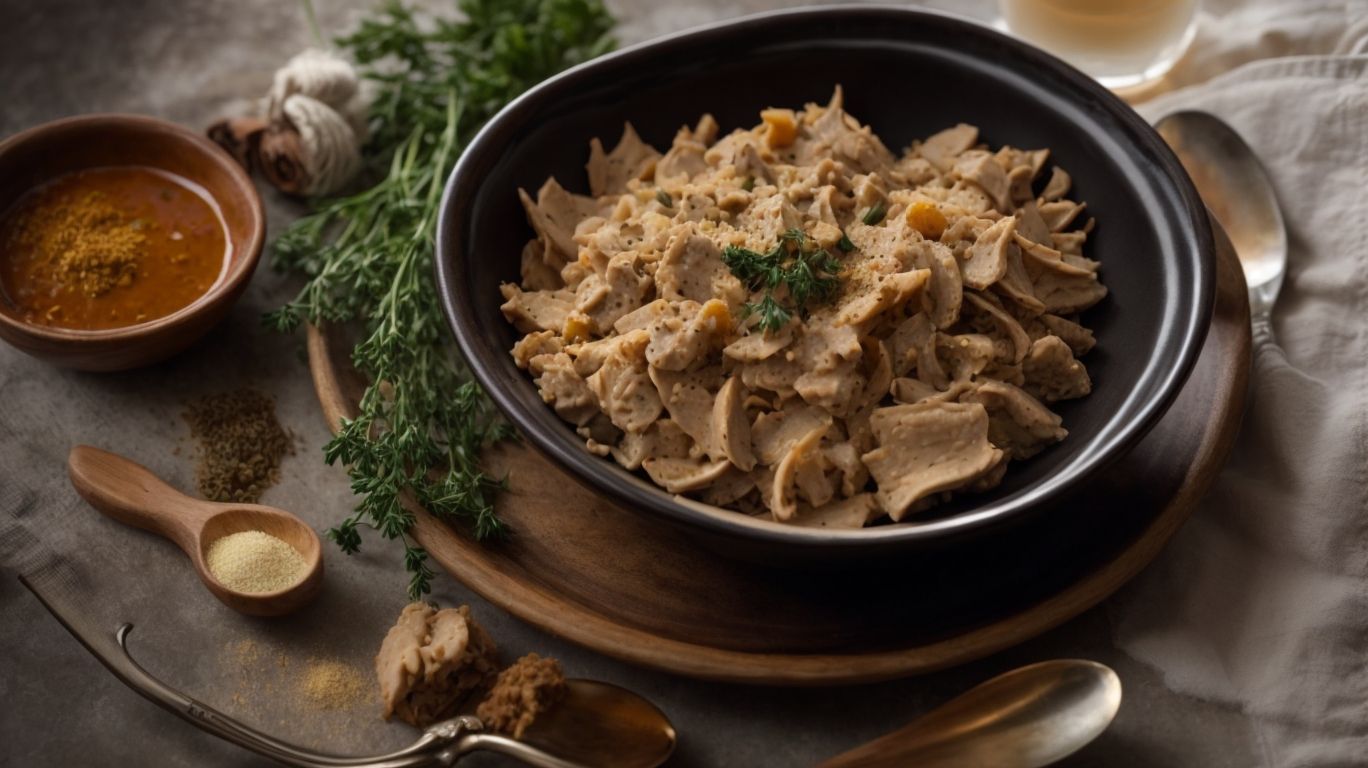
Credits: Poormet.Com – Robert Brown
Properly storing and reheating chitterlings can help maintain their freshness and minimize any lingering odors during the reheating process.
When storing chitterlings, it is essential to keep them in airtight containers to prevent any contamination and preserve their flavor. For optimal results, store them in the coldest part of your refrigerator, usually the back or bottom shelf. To reduce any strong smells when reheating, consider adding ingredients like lemon, vinegar, or onions to the reheating process. By incorporating these aromatic agents, you can help mask any unpleasant odors that might be released during reheating.
Proper Storage in the Refrigerator
Storing chitterlings in the refrigerator in a sealed container ensures their freshness and helps prevent any unpleasant odors from developing.
When storing chitterlings in the refrigerator, it is crucial to place them in an airtight container to maintain their quality. Proper sealing prevents any cross-contamination with other foods and helps retain the unique flavors of the dish. Storing chitterlings at a consistent temperature of 40°F or below is essential to inhibit bacterial growth and extend their shelf life. It is advisable to consume them within 2-3 days of storage for the best taste and quality. By following these storage guidelines, you can enjoy delicious chitterlings safely and without any concerns about spoilage.
Reheating in the Oven or on the Stove
Reheating chitterlings in the oven or on the stove allows for a controlled reheating process that helps maintain their texture and flavor without intensifying any existing smells.
When reheating chitterlings in the oven, it is essential to cover them tightly with foil to prevent them from drying out. This method ensures that the heat is evenly distributed, preserving the tenderness of the meat. Adding a splash of broth or stock before covering helps keep them moist.
On the stove, reheating chitterlings in a saucepan with a bit of water or broth can also be effective. Low heat and occasional stirring are the keys to preventing sticking and ensuring even warming. The liquid helps retain moisture and minimize any strong odors.
Tips for Reducing Smell During Reheating
To minimize any smell during reheating, consider adding aromatic ingredients or reheating chitterlings in a covered dish to trap the flavors and reduce odors.
Adding herbs or spices like thyme, garlic, or rosemary can infuse the chitterlings with a pleasant aroma, making the reheating process more enjoyable. Incorporating acidic ingredients such as lemon juice or vinegar can help cut through any lingering odors, balancing the overall scent.
Covering the dish with a tight-fitting lid or foil during reheating not only contains the fragrant steam but also helps retain moisture, preventing the chitterlings from drying out and enhancing their tenderness when served.
Frequently Asked Questions
What are chitterlings and why do they have a strong smell?
Chitterlings, also known as chitlins, are the small intestines of a pig. They have a strong smell due to the presence of bacteria and enzymes from the pig’s digestive system.
Can you cook chitterlings without the strong smell?
Yes, there are several methods you can use to cook chitterlings without the strong smell. This includes cleaning and preparing them properly, using strong spices and seasonings, and cooking them in a well-ventilated area.
How do you clean chitterlings to reduce the smell?
To clean chitterlings, soak them in cold water for at least 2 hours, changing the water every 30 minutes. Then, rinse them under cold water and remove any excess fat or debris. Finally, boil them in a pot of water with vinegar, lemon juice, and salt for 10-15 minutes.
What spices or seasonings can I use to mask the smell of chitterlings?
Some commonly used spices and seasonings to reduce the smell of chitterlings include garlic, onion, bay leaves, thyme, and cayenne pepper. You can also use hot sauce or vinegar for added flavor and to cut through the strong smell.
How long does it take to cook chitterlings without the smell?
It usually takes around 2-3 hours to cook chitterlings without the strong smell, depending on the method used. However, it is important to properly clean and prepare the chitterlings beforehand to ensure the best results.
Can I cook chitterlings in the oven to reduce the smell?
Yes, you can cook chitterlings in the oven to reduce the smell. Preheat the oven to 375°F and place the chitterlings in a covered baking dish with spices and seasonings. Bake for 45 minutes, then uncover and bake for an additional 15-20 minutes to crisp them up. This method also helps to reduce the smell.

